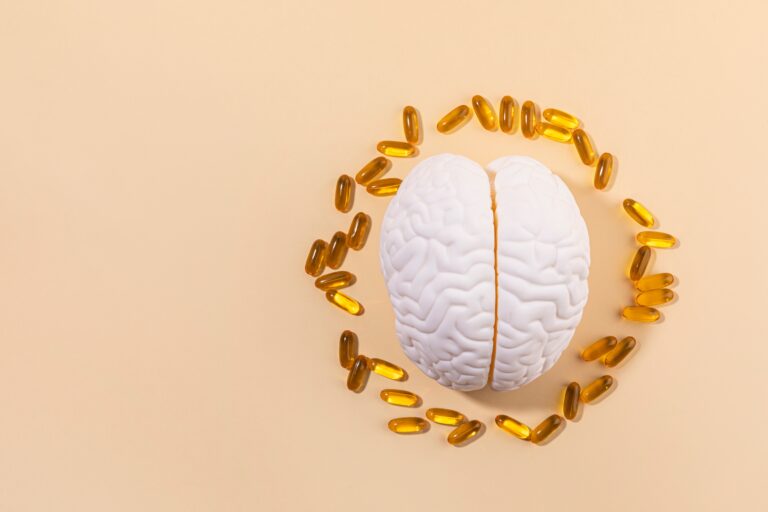The Role of Trace Minerals in the Body
The Role of Trace Minerals in the Body
Minerals are essential to many metabolic processes, and because they are required in relatively small amounts, daily consumption should fall within a narrow range to avoid negative effects of deficiency or toxicity. Some minerals are required in relatively large doses, including calcium and chloride. These minerals are considered macrominerals, based on the dose, and intake should generally be in the high milligram range. Trace minerals are required in very small doses and intake should be in the microgram to low milligram range. While this article will primarily highlight the role of copper and manganese, trace minerals also include iron, iodine, zinc, and others.
Copper
Absorption
Copper (Cu) is an essential micronutrient found in a variety of foods including oysters, whole grains, organ meats, beans, and nuts. Dietary copper is absorbed in the duodenum and enters intestinal cells via Copper Transporter 1 (CTR1).1,2 CTR1 is critical in coordinating copper absorption, intracellular distribution, and secretion along with Cu+-transporting ATPases.1,3 Copper travels to the liver via the portal vein bound to proteins, and after processing, is transported into the blood via copper ATPases.2 Copper must bind to a chaperone protein, such as ceruloplasmin (CP) or albumin, to travel to peripheral tissues.1
Because copper is highly reactive, cellular concentrations must be maintained in a specific range, and the localization of copper is highly regulated.1 Excessive intracellular copper can cause oxidative stress which can impair the formation of iron-sulfur clusters and damage DNA.1 Within cells, copper movement is tightly coordinated by proteins and compounds, and mutations in these and other copper-regulating proteins can lead to serious conditions in the body.1
Copper deficiency is rare and primarily related to genetic mutations in copper-metabolizing enzymes. The average daily intake of copper in the U.S. is approximately one milligram, which meets the RDA for adults set at 900 μg (0.9 mg) daily. Humans are able to handle excessive intake via decreased absorption and increased excretion in the bile.4
Copper in Pregnancy
Copper needs are increased during pregnancy as this micronutrient is very important for embryonic development.5 Although the mechanisms are not known, supplementation with copper during pregnancy resulted in a 75 percent reduction in depression and anxiety symptoms during the second trimester and a 90 percent reduction in the third trimester.5 Deficiency in babies is rare but can occur in preterm infants, infants fed with cow’s milk, and infants recovering from malnutrition that suffered losses from diarrhea.5
Function of Copper
Copper-dependent enzymes have diverse functions throughout the body including aerobic respiration and oxidative phosphorylation, collagen and melanin formation, neurotransmitter synthesis, and maintenance of redox homeostasis.1,3 Specifically, copper plays a role in antioxidant defense as a part of copper-zinc superoxide dismutase (CuZn SOD).4,5 Copper also functions as a transcription factor and scaffolding element in the nucleus of cells.1,4
Copper and Iron Interactions
The metabolism of copper and iron are interconnected in several ways although the exact relationship is not clear. The first detailed description of an interaction between iron and copper occurred in the mid-1800s, which pointed to a role for copper in positively influencing iron metabolism. 2 If iron is deficient, copper accumulates in the liver and if copper becomes deficient, iron will accumulate. 2 It is likely that copper and iron influence each other via absorption in the intestines and metabolism in the liver. 2
Copper in Disease States
While copper deficiency remains rare, there are several pathological conditions that occur as a result of functional copper deficiency due to genetic mutations in copper-metabolizing enzymes. Menkes disease (MD), an X-chromosome linked recessive condition, can be lethal.1 Symptoms include developmental delay, brain degeneration, unusually sparse or kinky hair, low muscle tone, and seizures.1 The severity of MD depends on the mutation in APT7A, a copper transport protein, and there are currently over 400 known mutations in this gene.1 For mild cases, copper supplementation can be helpful but does not help in severe cases, and there is no treatment to reverse neurological damage from MD.1
Occipital horn syndrome (OHS) is also an X-linked recessive disorder, primarily affecting males.1 The primary characteristic of OHS is a wedge-shaped, calcified protrusion at the occipital bone due to connective tissue malfunction.1 OHS does not present with the brain degeneration seen in MD because copper is still able to cross the blood brain barrier.
Wilson’s disease, another copper-enzyme related disorder, is caused by mutations in a copper transporting gene, ATP7B. Over 700 mutations in these gene have been associated with Wilson’s disease which manifests as liver cirrhosis and neurological deficiencies.1 However, in Wilson’s disease copper accumulates in several tissues and deposits may be seen in the corneas, referred to as Kayser-Fleischer rings.1
Copper also plays a role in other neurodegenerative diseases including:
- Alzheimer’s disease: formation of amyloid plaques is coordinated by zinc and copper and accumulation of copper impairs cell function1
- Parkinson’s disease: formation of aggregates is stabilized by copper and decreased ceruloplasmin impairs mobilization of copper, resulting in accumulation of iron1
- Amyotrophic lateral sclerosis: Several copper-metabolizing enzymes are altered, resulting in elevated copper levels in cerebral spinal fluid and decreased levels in the spinal cord1
- Huntington’s disease: copper promotes the formation of mutant Huntingtin protein aggregates and metabolic dysfunction results from copper-inhibiting enzymes involved in metabolism1
Copper and Cancer
Interestingly, copper has been found to be both a promoter and inhibitor of cancer. Copper is involved in the regulation of proteins associated with evading the immune system and can activate pathways involved in cancer via proliferation, differentiation, angiogenesis, and cancer progression.1 Proliferating cancer cells also have a greater demand for copper, which provides a possible route to slow cancer growth by limiting copper.1 On the other hand, high levels of copper can inhibit cellular proliferation and tumor growth and copper transporters can change the sensitivity of cancer cells to metal-based drugs used to treat cancer, enhancing the response.1 It can also help lessen the toxic effects associated with this type of treatment and may increase survival.1
Manganese
Absorption
Manganese is primarily acquired from dietary sources, with approximately one to five percent being absorbed and available to the body.6,7 Sources of manganese include rice, nuts, whole grains, leafy green vegetables, and tea.6 Interestingly, females tend to absorb more manganese from the diet, likely due to iron status as these two minerals affect the absorption of one another.5-7 Absorption from the diet is affected by the presence of other trace minerals including iron, phytates from seeds or nuts, and vitamin C.7 Manganese deficiency is rare but symptoms include impaired growth, skeletal defects, reproductive issues, and altered lipid and carbohydrate metabolism.5,7
Excessive manganese in the body can result in toxicity, which is often due to occupational exposure where manganese is inhaled, such as in miners and welders.6,8 Drinking water can also contain dangerously high levels of manganese, affecting children and developing babies.5 If intake or exposure is excessive, manganese will accumulate with detrimental effects in the brain.6 Chronic excessive manganese intake can lead to manganism, a disorder characterized by several psychiatric and motor disturbances including mood changes, and tremors, eventually progressing to Parkinson’s disease-like symptoms.6
Because manganese concentrations must remain in a relatively narrow range, absorption is highly regulated. When dietary manganese is high, the GI tract will absorb less, and the liver will increase metabolism of manganese and send more to be excreted via biliary and pancreatic excretion.7 Due to insufficient evidence, there is currently no established recommended dietary allowance for manganese. However, the adequate intake level is 2.3 mg/day for men and 1.8 mg/day for women7
Function
Manganese is required for intracellular activity due to its role as an enzyme activator for several enzymes including those involved in lipid, amino acid, and glucose metabolism.5,8 Notably, it is required for manganese superoxide dismutase (MnSOD), an enzyme essential for managing redox balance and oxidative stress.7,8 Manganese is also required for development, digestion, reproduction, energy production, immune response, and neural activity, and supports vitamin K in blood clotting activity.5,7,8 Manganese is important in female reproduction and fetal development and both deficiency and excess manganese intake are associated with female infertility.5
Manganese in Altered Metabolism
Manganese is critical to the health of mitochondria and reducing mitochondrial oxidative stress because MnSOD is the primary superoxide scavenger in the mitochondria.8 Current literature supports a U-shaped relationship between manganese and oxidative stress where both deficiency and toxicity results in excess production of reactive oxygen species which can disrupt healthy metabolism.8 Manganese deficiency may lead to mitochondrial dysfunction, which can disrupt glucose tolerance and alter lipid and carbohydrate metabolism. Manganese overload may also impair normal mitochondrial function through increased mitochondrial oxidative stress, inhibition of ATP production, and altering membrane permeability. Oxidative stress can impair pancreatic islet beta cell function, contributing to insulin resistance and ultimately type 2 diabetes and obesity, as well as contributing to the development of atherosclerosis and nonalcoholic fatty liver disease.8
Iron
Iron possesses important redox characteristics like copper and is also involved in redox reactions. Iron is required for the synthesis of the oxygen transport proteins hemoglobin and myoglobin. There are two forms of iron found in the diet: heme and non-heme iron. Heme iron comes from animal sources and is highly bioavailable, whereas non-heme iron is found in plant sources and has very low bioavailability. Because most of the iron in the body is found in red blood cells, females require more iron than males due to the regular loss of blood during the menstrual cycle.5 Chronic insufficient intake of iron can result in iron-deficiency anemia and iron toxicity typically occurs from a hereditary disease, hemochromatosis, which results in iron overload.
Iodine
Iodine is required for proper functioning of the thyroid gland and regulates basal metabolic rate.5 It is rapidly absorbed in the duodenum and circulates to the thyroid gland. When intake of iodine is chronically low, the hypothalamus-pituitary-thyroid pathway is activated and produces thyroid stimulating hormone, resulting in hypertrophy of the thyroid gland, eventually leading to the development of goiter.5 Iodine deficiency is a rare problem in industrialized populations where iodine is added to salt and present in milk.
Zinc
Zinc is one of the most abundant trace minerals in the body. It is found in all body tissues and is particularly concentrated in muscles and bones.5 Zinc is a structural component of zinc finger proteins and catalyzes activity of several enzymes involved in protein structure folding and gene expression.5 Zinc is also required for cell growth and differentiation, immune system function, and connective tissue maintenance.5 Zinc is an important mineral for the reproductive system, with a role in spermatogenesis and maintenance of the lining of reproductive organs.5
Other Trace Minerals
Less is known about the remaining trace minerals including selenium, chromium, cobalt, and molybdenum. Selenium is incorporated into selenoproteins which have diverse functions including in redox reactions, immunoglobulin production, thyroid health, and as an anti-cancer element in the body.5 Chromium may play a role in improving glucose tolerance through reducing insulin resistance in individuals who demonstrated altered glucose and lipid metabolism, although studies have produced conflicting results.9
Cobalt is primarily found in vitamin B12 (cobalamin) and is important for biochemical processes including synthesis of nucleic acids and amino acids and erythrocyte production.5 Cobalt can enter the body through the diet, skin, and even the respiratory system.5 Finally, molybdenum, a trace element found in plant dietary sources including legumes, is involved in reactions as a cofactor for enzymes that metabolize chemicals.5 Deficiency is rare, as is toxicity because the urinary system will excrete excess molybdenum if levels are elevated.5 Molybdenum may also play a role in diabetes through damaging pancreatic beta cells and possibly sexual dysfunction, but studies are conflicting in humans.5
Trace minerals are required in such small quantities that it can be easy to overlook them. However, they are critical to the health of the body and help maintain enzymatic and metabolic processes. Consuming a balanced, plant-based diet can help ensure adequate intake of several trace minerals.
- Maung, M.T., Carlson, A., Olea-Flores, M., Elkhadragy, L., Schachtschneider, K.M., Navarro-Tito, N., Padilla-Benavides, T. (2021). The molecular and cellular basis of copper dysregulation and its relationship with human pathologies. FASEB J, 35(9):e21810. doi:10.1096/fj.202100273RR.
- Gulec, S., Collins, J.F. (2014). Molecular Mediators Governing Iron-Copper Interactions. Annu Rev Nutr, 34:95-116. doi: 10.1146/annurev-nutr-071812-161215.
- Lutsenko, S. (2010). Human copper homeostasis: a network of interconnected pathways. Curr Opin Chem Biol, 14(2):211-217.
- Kardos, J., Héja, L., Simon, A., Jablonkai, I., Kovács, R., Jemnitz, K. (2018). Copper signalling: causes and consequences. Cell Commun Signal, 16(1):71-91. https://doi.org/10.1186/s12964-018-0277-3.
- Farag, M.A., Hamouda, S., Gomaa, S., Agboluaje, A.A., Hariri, M.L.M., Yousof, S.M. (2021). Dietary micronutrients from zygote to senility: updated review of minerals’ role and orchestration in human nutrition through life cycle with sex differences. Nutrients, 13 (11):3740-3762.
- Chen, P., Bornhorst, J., Aschner, M. (2018). Manganese metabolism in humans. Front Biosci, 23:1655-1679.
- Aschner, J.L., Aschner, M. (2005). Nutritional aspects of manganese homeostasis. Mol Aspects Med, 26(4-5):353-362.
- Li, L., Yang, X. (2018). The essential element manganese, oxidative stress, and metabolic diseases: links and interactions. Oxid Med Cell Longev, 2018:1-11.
- Dubey, P., Thakur, V., Chattopadhyay, M. (2020). Role of Minerals and Trace Elements in Diabetes and Insulin Resistance. Nutrients, 12(6):1864-1880.







